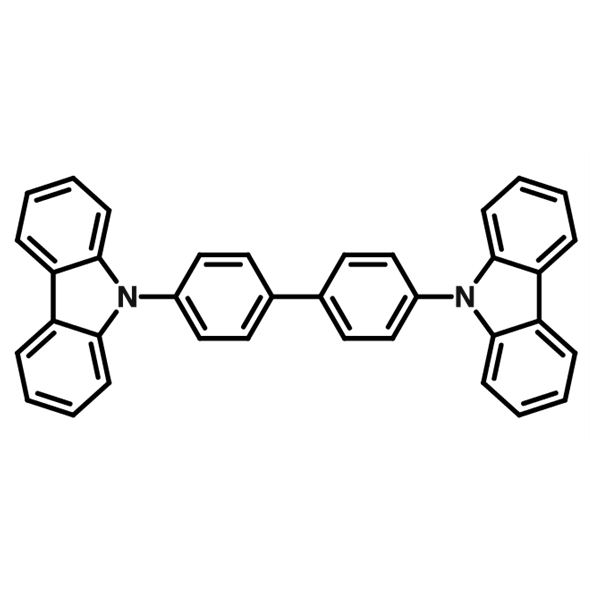What is Photoluminescence?

Photoluminescence happens when a material emits light after absorbing a photon from an external light source. Electrons in the material are excited into their higher energy states. As they relax, the electrons will then emit photons of a lower energy.
There are several ways of categorizing photoluminescence. You must first consider that both radiative and non-radiative emissions will occur within a sample. As a type of radiative emission, photoluminescence can then be divided into two main categories:
- Fluorescence
- Phosphorescence
These categories have different energy transition pathways and lifetimes. Thermally activated delayed fluorescence (TADF), occurring over milliseconds, is slower than typical fluorescence, which happens in nanoseconds. Due to this characteristic, TADF materials are particularly useful in organic light emitting diodes (OLEDs).
Photoluminescence Theory
Unpaired electrons in the ground state of a material can be excited by a photon into a higher energy state. This only occurs if the energy of the photon is larger than the gap between the energy levels.
If an electron is excited into a higher energy vibrational state, it will lose some of this energy to thermalisation, lattice vibrations or through the emission of phonons. Essentially, the electron will quickly relax to the S1 energy state.
Photoluminescence occurs when this electron relaxes back into the S0 state, emitting a lower energy photon. Another equivalent way to view this process is as the recombination of an electron and an electron vacancy (often referred to as a "hole"). The emitted light corresponds to the energy difference between the S1 and S0 through the photon energy equation.
Radiative and Non-Radiative Relaxation
Excited electrons in a material can lose energy through radiative or non-radiative emissions. In radiative emission, the excited electron relaxes, releasing a photon. However, in non-radiative relaxation, this energy is lost in other ways.
Photoluminescence is an example of radiative emission. Examples of non-radiative emission include the thermalisation of electrons which are excited to vibrational energy levels. It can also be recognised in the process of fluorescence quenching. This energy gets lost as heat, through vibrational interactions or through atomic collisions.
In the study of semiconductors or other electronic devices, these transitions are often referred to as radiative or non-radiative recombination. This means the same thing as radiative or non-radiative emission but focuses on a different part of the emission. Here, radiative recombination is viewed as the recombining of an electron and hole pair, which releases a photon. This is an important distinction to make, because depending on what your electronic device will do, your desired amount of radiative and non-radiative recombination will differ.
Stokes Shift
When a photon of greater energy than the energy gap (i.e. S0 → S1 transition) is absorbed, an electron will be excited to a higher vibronic (electronic and vibrational) energy level. The probability of a transition happening between these vibronic states is given by the Franck-Condon principle. This relies on the relative overlap of the wavefunctions of the two states: the greater the overlap, the greater the probability of the transition happening. The Franck-Condon principle applies to both the absorption and emission processes.
Once excited, the electron will generally relax back down to the lowest vibrational level of the S1 state through non-radiative relaxation. It will then relax through photoluminescence back to the electronic ground state, S0, thus emitting a photon. Again, this is recognised according to the Franck-Condon principle.
Essentially, the energy of this emitted photon will be less than the photon absorbed. This is because of the non-radiative energy loss that occurs as the electron transitions through the vibrational energy levels. This principle is more commonly known as Stokes shift.
The above spectrum shows the absorbance and photoluminescence spectra of BOPIDY-Br in polystyrene. You can see in this spectrum that the maximum absorbance peak is blue shifted compared to the photoluminescence peak. Here, you can recognize an example of the stokes shift.
It is important to note that electrons tend to first relax non-radiatively to S1 via vibrational relaxation and then radiatively from S1 to S0. Therefore, photoluminescence spectroscopy only measures the transitions between S1 to S0. This is known as Kasha's rule, that the photoluminescence spectrum obtained from a material is entirely independent of the excitation wavelength.
Fluorescence or Phosphorescence
Fluorescence is a type of photoluminescence in which a material absorbs a photon and almost immediately emits a lower energy photon. Atomically, this process consists of only singlet-singlet transitions, or completely allowed transitions. Therefore, fluorescence emission takes place over a short timescale. This type of PL happens while the sample is being illuminated.
In phosphorescence, an electron absorbs a photon and is excited into a higher energy level. Again, this electron then relaxes into the ground state, emitting a photon. However, this relaxation takes much longer than it does for fluorescence. This is because phosphorescence requires a singlet-triplet transition. These transitions are "forbidden", which means that although these transitions can occur, they are rare. Therefore, phosphorescent emissions have a much longer lifetime than fluorescent emissions. This is also why phosphorescent materials will glow after illumination has stopped.
You can use fluorescent materials for a wide range of applications in bioluminescent technology, microscopy, and medicine. They are also effective as chemical labels. You can use phosphorescent materials for a number of different "glow-in-the-dark" applications (paints, toys, etc) as they will continuously emit light after illumination. These were also useful in second generation OLED devices, while both phosphorescence and fluorescence play a key part in thermally activated delayed fluorescence.
Thermally Activated Delayed Fluorescence (TADF)
Thermally Activated Delayed Fluorescence (TADF) is a process for generating fluorescence from electrons in the triplet state. Fluorescence from triplet states is forbidden, however, electrons in TADF materials can use surrounding thermal energy to transition electrons from the excited triplet to the excited singlet state. This is referred to as ‘reverse intersystem crossing’. It is a slow system which leads to the resulting fluorescence to be ‘delayed’.
TADF has significant implications for OLEDs as it allows higher photoluminescence quantum yields to be achieved.
TADF Materials

Learn More
Fluorescence and phosphorescence are types of photoluminescence. Photoluminescence refers to radiative emissions where the absorbance of a photon is followed by the emission of a lower energy photon.
Read more... Photoluminescent Spectroscopy
Photoluminescent Spectroscopy
Photoluminescence refers to a form of luminescence that results from photoexcitation. Simply, photoluminescence occurs when a material emits light after absorbing a photon from an external light source and is measured using a spectrometer such as an optical spectrometer.
Read more...References
- T.-S. Ahn, et al. Rev. Sci. Instrum. 78, 086105 (2007).
Contributing Authors
Written by
PhD Student Collaborator
Reviewed by
Application Scientist